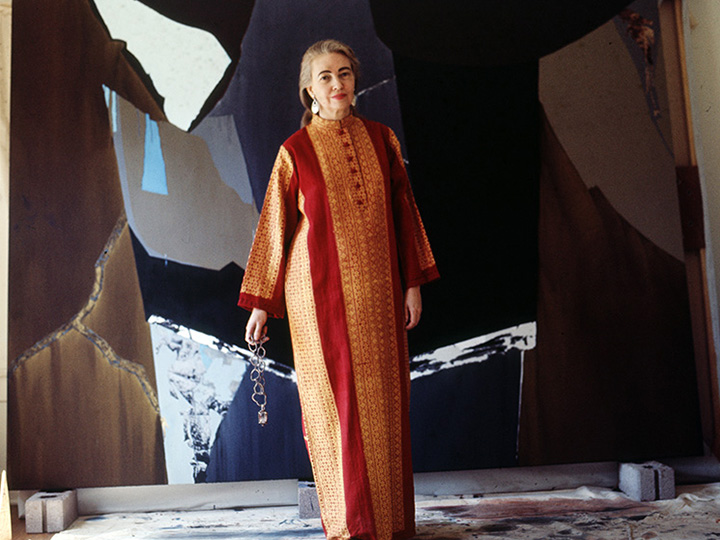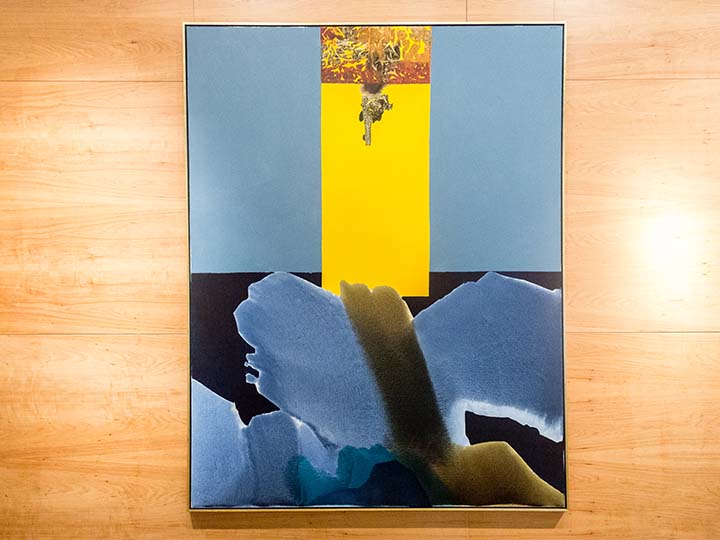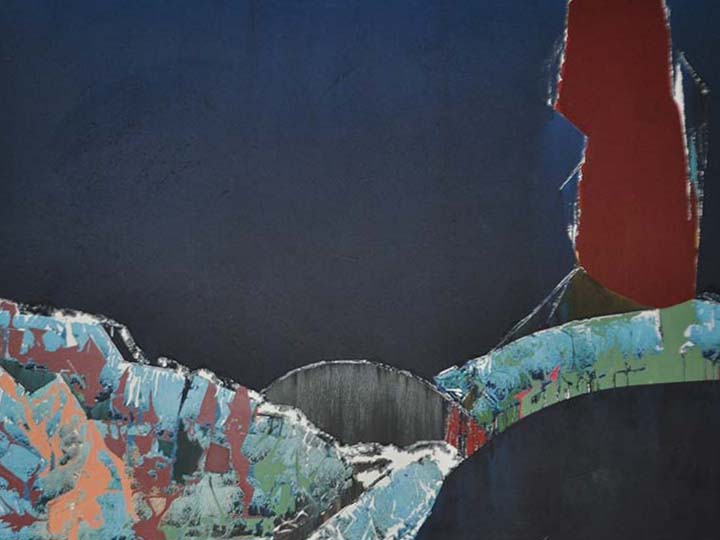


Dorothy Hood is one of Texas’ most iconic artists, making a name for herself with her monumental canvases that, “form the bridge between the strains of Latin and European surrealism and New York abstraction,” said Texas author and curator Susie Kalil.
Born in Bryan and raised in Houston, Hood trained at the Rhode Island School of Design in the mid-1930s and later at the Art Students League in New York. After early exposure to the New York School, Hood traveled to Mexico on a whim, joining friends on a road trip that ultimately lasted 22 years. In Mexico City, Hood entered the circle of number of important figures in the Mexican cultural scene of the 1940s and 1950s including the artists Remedios Varo, Rufino Tamayo, José Luis Cuevas and José Clemente Orozco.
Hood was a pioneer of her time, but like many artists, her influence or fame as an artist was not fully realized until after her death in 2000 at the age of 81. Today, her works are revered more than ever. Public Art of the University of Houston System (PAUHS) is home to two Dorothy Hood oil on canvas paintings—one of her preferred mediums. “The Angel’s Key” hangs on the wall of the Wortham Theatre Lobby at the University of Houston and “Time the Bridge of Doors” is located in the Bayou Building of the University of Houston-Clear Lake (UHCL).
“Dorothy Hood’s large-format works reflect both the exuberant palette and energy of midcentury Mexico, where she spent much of her formative period as an artist, as well as more ordered, structured takeaways from her earlier New York period,” said María C. Gaztambide, PAUHS director and chief curator. “These dual interests come together in expansive canvases evoking the borderland ethos of her native Texas.”
Hood moved back to Houston in the early 1960s. She worked at a gallery, taught at the Museum of Fine Arts, Houston (MFAH) Museum School and continued to evolve as an artist. In the 1970s, her work took off and she garnered critical acclaim. In 1979, UHCL held an exhibition of more than 20 of Hood’s works. One of those paintings never left the university. It was recommended to then Chancellor Alfred Neumann to purchase “Time the Bridge of Doors” and make it a permanent part of the collection. UHCL bought the painting for $4,500 under the Percent for Art program, a policy that dedicates one-percent of the construction costs of all future building projects to the acquisition of works of art. Today, the painting is valued at more than eight times its purchase price.
Nearly 40 years after UHCL acquired “Time the Bridge of Doors,” another Dorothy Hood painting arrived at the University of Houston. In 2017, the John O’Quinn Foundation gifted “The Angel’s Key” (1987) to UH to honor the friendship between Hood and Kathrine G. McGovern—namesake of the UH College of the Arts. McGovern studied art and design at UH and trained with Hood at the MFAH Museum School.
“Dorothy Hood changed how painting was understood in Houston in the 1960s and 1970s, a pivotal era in this city’s history. More than any other artist of her generation, she made abstraction the language of avant-garde art in Texas,” said Alison De Lima Greene, MFAH curator.
The public can see the Dorothy Hood paintings in the PAUHS collection by visiting the UH and UHCL campuses. PAUHS also holds monthly public art tours. For dates and times, visit the PAUHS website.
The MFAH’s newest exhibition “Kindred Spirits” features Hood and Louise Nevelson, two prominent female abstract artists of their time. While the two may have never met, they both had celebrated careers with ties to Houston, and their work shares common ground. The exhibit runs through Feb. 3, 2019.